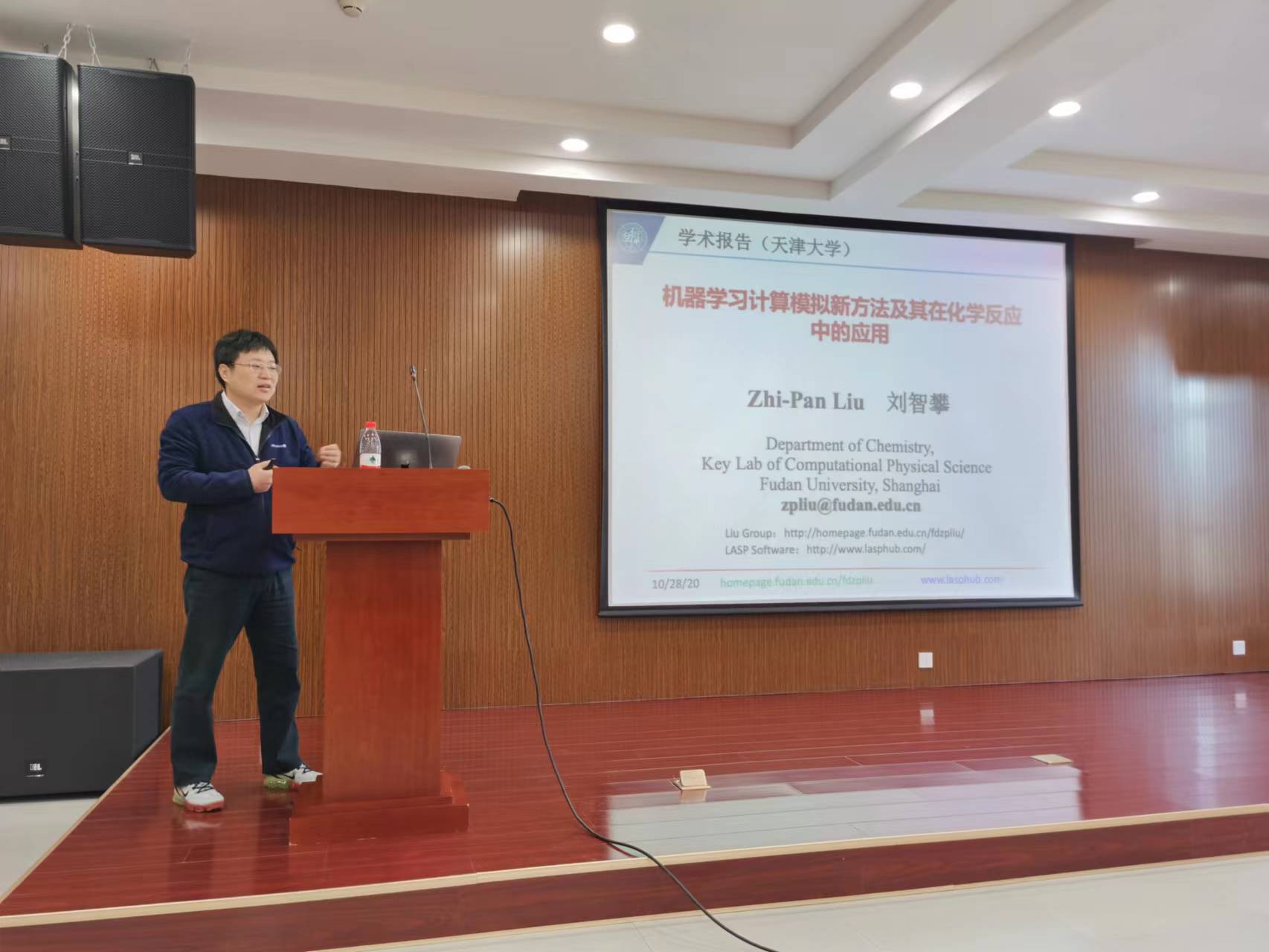Prof. Zhi-Pan Liu from Fudan University, China, visited us today and gave an IREC2 lecture with the title “A new computational method based on machine learning and its application in chemical reactions”.
How to design highly efficient and specific catalytic materials has always been a basic problem in physical chemistry. Among them, the characterization and deep understanding of catalyst structure and catalytic active sites are the keys to rational catalyst design. Currently, from the perspective of theoretical chemistry, the calculations of surface and interface electronic structure and large-scale simulations have encountered obvious bottlenecks. In particular, the calculation and simulation of nano-scale complex catalytic reaction systems are extremely difficult. To get rid of this predicament and carry out large-scale as well as long-term atomic simulations of materials and catalytic processes, in recent years, the research group of Prof. Zhi-Pan Liu has developed a neural network (NN) function based on the global potential energy surface (PES). Combined with the existing global optimization algorithm (Stochastic Surface Walking (SSW)), transition state method, etc., a large scale atomic simulation package formed. It is called the Large Scale Atomic Simulation Package (LASP) and a corresponding web service, www.lasphub.com, is provided. In this report, Prof. Zhi-Pan Liu focuses on the recent development of global NN function fitting techniques, data collection, and artificial intelligence prediction of chemical reactions. Typically, the research progress in the catalytic conversion of synthesis gas and glucose pyrolysis reactions are presented.
Zhi-Pan Liu is a Full Professor in Physical Chemistry at Fudan University (China). His research focuses on the development of theoretical computational chemistry methods and the simulation calculation of surface and interface chemical reaction processes. In 2003, he obtained a doctorate in theoretical chemistry from Queen’s University in the United Kingdom. From 2003 to 2005, he was engaged in post-doctoral research in the theory of surface science at Cambridge University in the United Kingdom. He presided over several national-level projects such as the key research and development nanotechnology projects of the Ministry of Science and Technology, 973 projects, and key projects of the National Natural Science Foundation of China. He was funded by the Yangtze River Scholars of the Ministry of Education and the Outstanding Youth Fund of the National Natural Science Foundation of China.
He is co-author of about 160 publications on international journals, among which 25 are J. Am. Chem. Soc. The total citations are more than 8,500. At present, he serves as senior editor of J. Phys. Chem. A/B/C, and editorial board member of Scientific Chinese Chemistry. He received the 2004 International Union of Pure and Applied Chemistry (IUPAC) Young Chemist Award, the 2007 Young Chemistry Award of the Chinese Chemical Society, the 2008 Shanghai Young Talents in Science and Technology, the 2019 Shanghai Natural Science Award (the first prize and the first person) and the 2020 Science Exploration Award.
